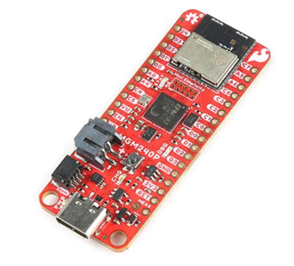Getting started with Matter
The cloud of confusion around smart home development was greatly reduced with the introduction of Matter, a new technology standard introduced by the Connectivity Standards Alliance (CSA). If you have ever shopped for devices to make your home a little smarter, you may appreciate the impact Matter is having on the smart home industry.
This article originally appeared in the Feb'24 magazine issue of Electronic Specifier Design – see ES's Magazine Archives for more featured publications.
By Josh Mickolio, Supplier Business Development Manager, Wireless and IoT, DigiKey
We all have one or multiple favourite smart home ecosystem(s), which may be from Apple, Amazon, Google, Samsung, or the many other options available. Having so many options available is usually a great thing, unless you are a company developing for and maintaining all those options. Matter now allows these companies to design one product, i.e., a wireless light bulb, that will now be compatible with all of these popular smart home platforms.
With Matter, and you may have noticed this already by searching for Matter keywords online, searches may or may not return your desired results. My search on some popular search engines for ‘Matter Starter Kit’ returned mostly results for some role-playing games. We thought it would be useful to put together a brief introduction to Matter-compatible devices and development kits.
Matter is an open-source standard managed by the CSA, and as with most standards organisations, like the Wi-Fi Alliance, Bluetooth SIG, and others, the CSA does a great job highlighting devices that are certified for use with Matter. The CSA website has a host of resources, FAQ, documentation, and more at https://csa-iot.org/all-solutions/matter/. The CSA has a certified products search on its website, located at https://csa-iot.org/csa-iot_ products/. On this page you will find two areas, one is a search for end products and the other or compliant platforms.
In addition, the ‘Program Type’ filter on the left of the certified products search page lists all of the technologies supported by the CSA, one of which is Matter. A few Matter-compliant suppliers and products are listed in the table. Please note that this is not a complete listing as there are other variants of these devices available not to mention other companies who utilised these chips in their modules, devices, etc.
Another extremely useful reference is the Project CHIP (Matter) GitHub. There are a lot of examples here for your coding pleasure.

When developing a Matter compliant project, you will find a lot of things remain the same including needing the coding for connectivity and sensors. Where this will vary is that you now need to include Matter as well. By utilising one of the many examples referenced in the table you will be able to save yourself a great deal of time. There are a multitude of different language examples available including, but not limited to C++, Java, and Python, making this a great option for any developer.

When Matter was developed, there were many things that were important to consider, but three key factors were reliability, security, and seamless integration. These factors continually improve as new versions are released. Some of the key security factors include device-unique joining authentication, secure over-the-air updates, and network-wide privacy and integrity. By utilising the resources listed, a developer can ensure that these security measures and many more are incorporated into their project.
The goal of the Matter technology standard is to unify and simplify smart home devices and it came together as part of a highly collaborative effort, three years in the making, between a standards alliance and industry giants. However, if we look deeper into Matter, we can start to appreciate it for what it is, 20+ years of tremendous effort and an evolution of many different technologies that is radically changing the face of today’s smart home.











